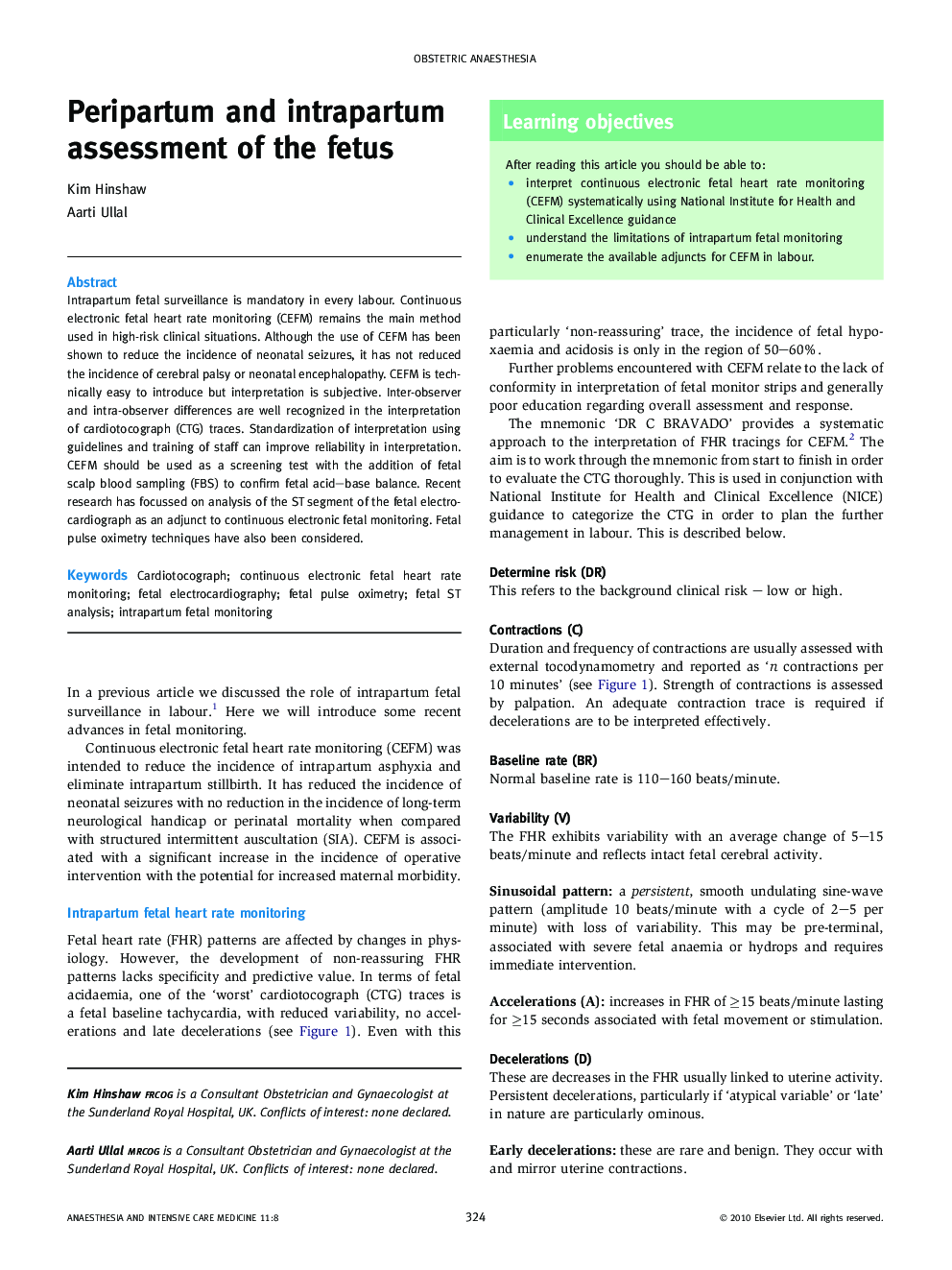| Article ID | Journal | Published Year | Pages | File Type |
|---|---|---|---|---|
| 2743037 | Anaesthesia & Intensive Care Medicine | 2010 | 4 Pages |
Intrapartum fetal surveillance is mandatory in every labour. Continuous electronic fetal heart rate monitoring (CEFM) remains the main method used in high-risk clinical situations. Although the use of CEFM has been shown to reduce the incidence of neonatal seizures, it has not reduced the incidence of cerebral palsy or neonatal encephalopathy. CEFM is technically easy to introduce but interpretation is subjective. Inter-observer and intra-observer differences are well recognized in the interpretation of cardiotocograph (CTG) traces. Standardization of interpretation using guidelines and training of staff can improve reliability in interpretation. CEFM should be used as a screening test with the addition of fetal scalp blood sampling (FBS) to confirm fetal acid–base balance. Recent research has focussed on analysis of the ST segment of the fetal electrocardiograph as an adjunct to continuous electronic fetal monitoring. Fetal pulse oximetry techniques have also been considered.
